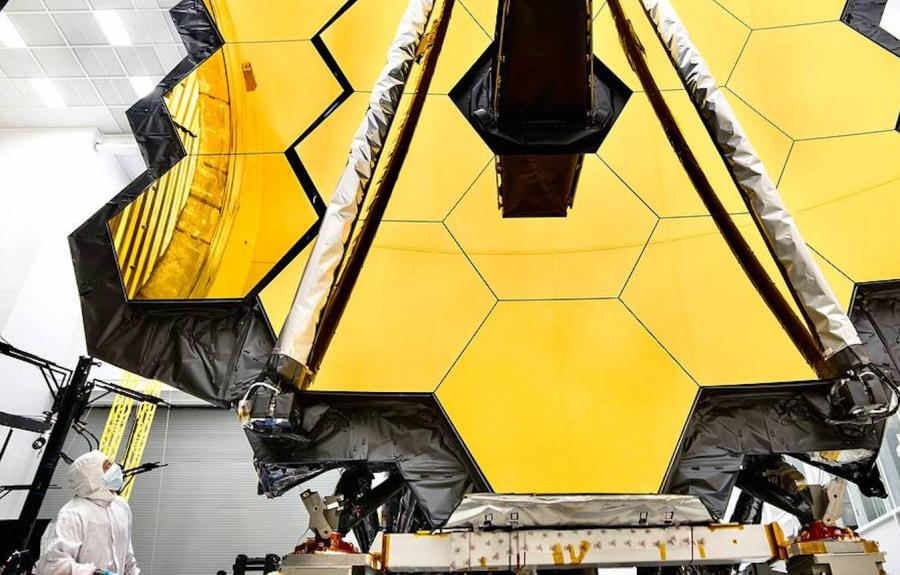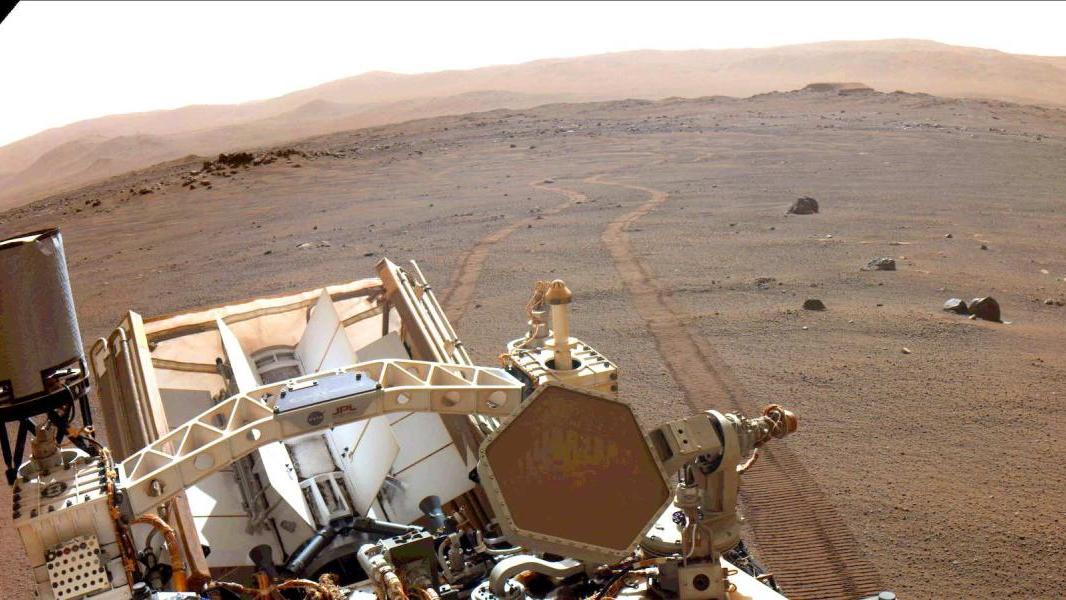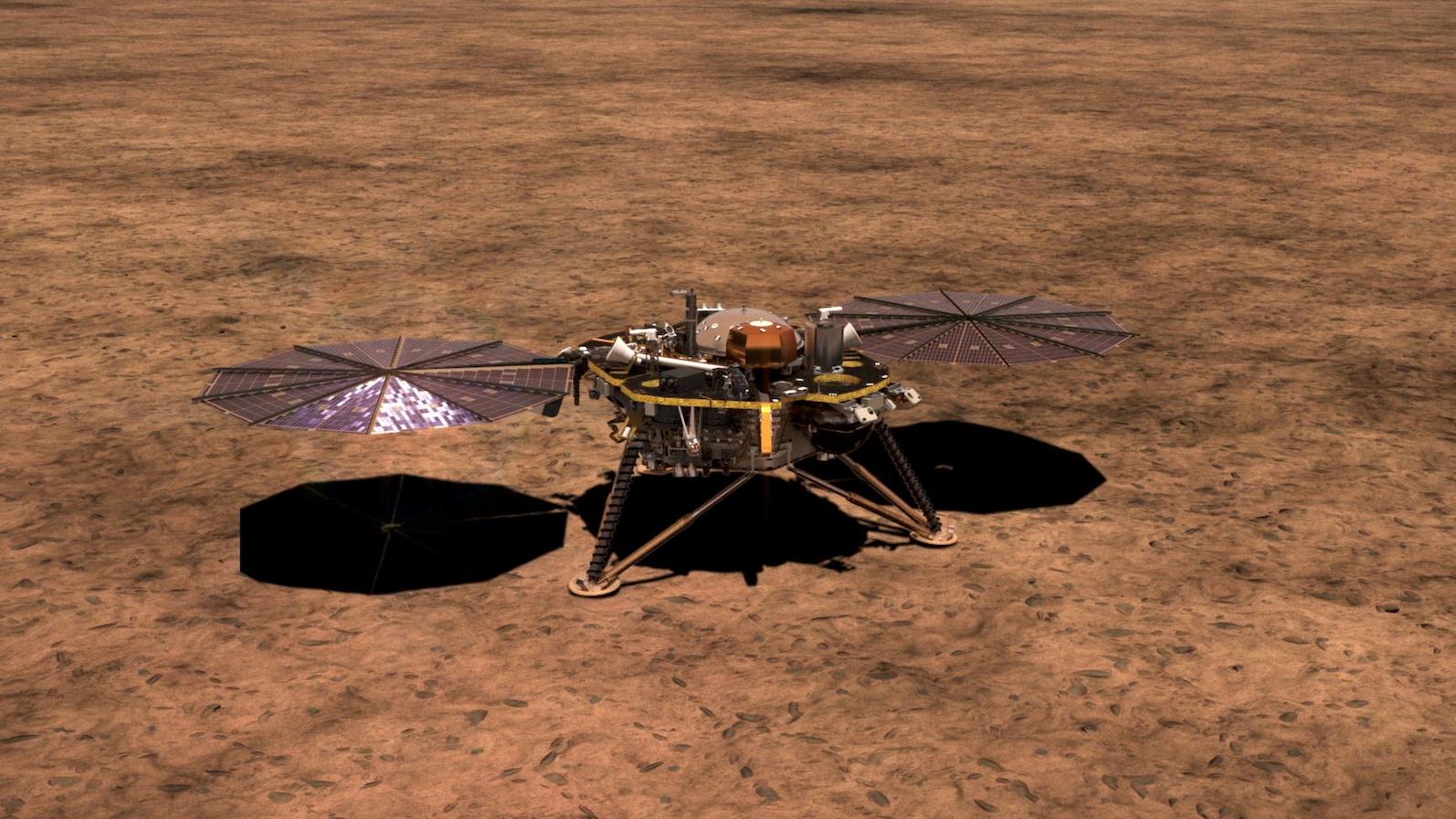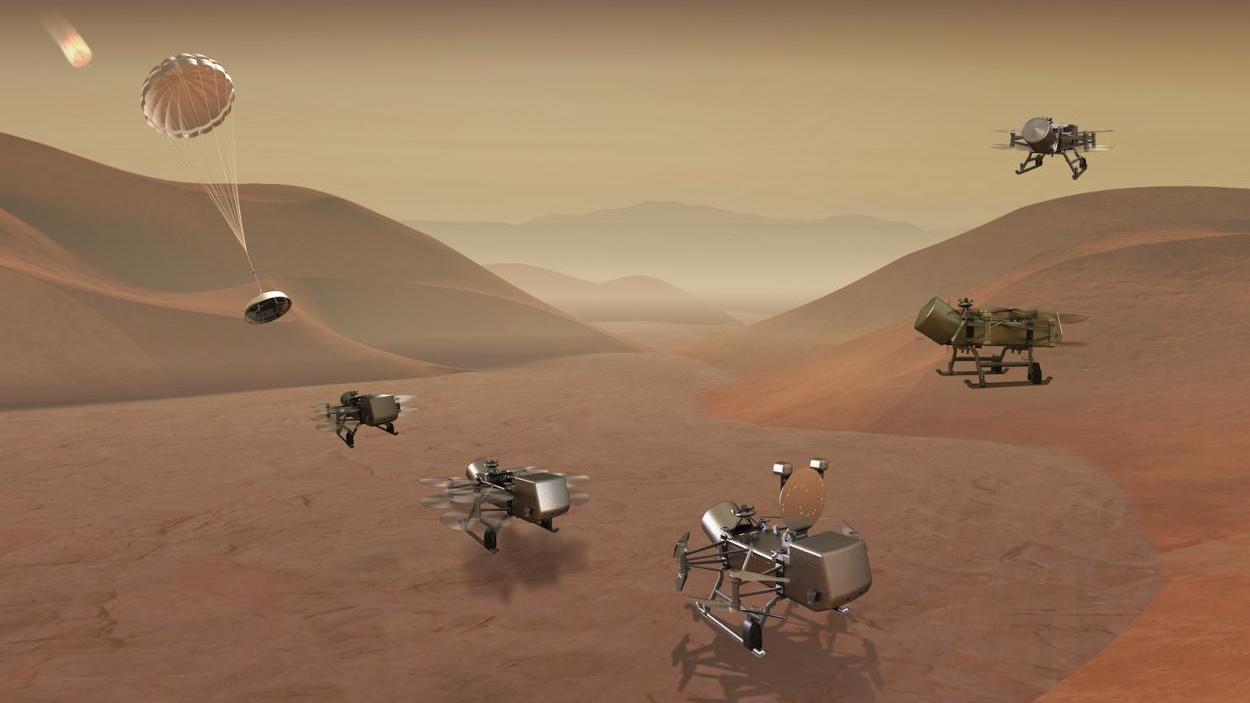Introduction
For as long as there have been people on Earth, we have looked up at the sky and wondered about the Sun, Moon, stars, and occasional dramatic events we saw there. But it is only in the past 50+ years that we developed the technical ability to leave our planet and actually visit other bodies in the universe.
Since the early days of space exploration, Cornell astronomers have played major roles in NASA missions to explore the solar system and distant universe. This strong tradition, going back to Thomas Gold and the Apollo mission to the Moon, and Carl Sagan and the early exploration of Mars by Mariner 9 and Viking, continues today. The Infrared Spectrometer (IRS), a major instrument on the Infrared Telescope Facility (Spitzer Infrared Telescope Facility), was developed by a group at Cornell. The focal point for the analysis of data being collected by this instrument was the IRS Data Center located at Cornell. Cornell planetary scientists played big roles in the NEAR mission which culminated in the successful landing on asteroid 433 Eros in 2001, and were responsible for developing the Athena instrument package for the Mars Exploration Rovers: Spirit and Opportunity. Under Cornell leadership the rovers collected a wealth of observational data on the ancient climate of the planet.
James Webb Space Telescope
The James Webb Space Telescope will be the world’s premier space science observatory, able to solve mysteries in our solar system, look beyond to distant worlds around other stars, and probe the enigmatic structures and origins of our universe. Webb is an international program led by NASA, with partners the European Space Agency and the Canadian Space Agency.
The James Webb Space Telescope’s revolutionary technology will study every phase of cosmic history—from within our solar system to the most distant observable galaxies in the early universe. Webb’s infrared telescope will explore a wide range of science questions to help us understand the origins of the universe and our place in it.
Webb will directly observe a part of space and time never seen before. Webb will gaze into the epoch when the very first stars and galaxies formed, over 13.5 billion years ago. Ultraviolet and visible light emitted by the very first luminous objects has been stretched or “redshifted” by the universe’s continual expansion and arrives today as infrared light. Webb is designed to “see” this infrared light with unprecedented resolution and sensitivity.
Webb will also be a powerful tool for studying the nearby universe. Scientists will use Webb to study planets and other bodies in our solar system to determine their origin and evolution and compare them with exoplanets, planets that orbit other stars. Webb will also observe exoplanets located in their stars’ habitable zones, the regions where a planet could harbor liquid water on its surface, and can determine if and where signatures of habitability may be present. Using a technique called transmission spectroscopy, the observatory will examine starlight filtered through planetary atmospheres to learn about their chemical compositions.
Instruments include a Near-Infrared Camera, Near-Infrared Spectrograph, Mid-Infrared Instrument and Fine Guidance Sensor/Near InfraRed Imager and Slitless Spectrograph.
Perseverance Mars2020
The Mars 2020/Perseverance rover is designed to better understand the geology of Mars and seek signs of ancient life. The spacecraft landed at Jezero crater, an ancient lake basin at the end of a multibillion-year-old river network. While examining the ancient river delta and its surroundings, the rover’s sample and caching system will collect soil and rock types, and prepare them for a follow-up mission that will return samples to Earth. Its goals include exploring its geologically diverse landing site; assessing ancient habitability; and seeking signs of ancient life, particularly in special rocks known to preserve signs of life over time.
Perseverance is also testing new technology to benefit future robotic and human exploration of Mars. That includes an autopilot for avoiding hazards called Terrain Relative Navigation and a set of sensors for gathering data during the landing (Mars Entry, Descent and Landing Instrumentation 2, or MEDLI2). A new autonomous navigation system allows the rover to drive faster in challenging terrain. As with Curiosity, Perseverance’s baseline power system is a Multi-Mission Radioisotope Thermoelectric Generator (MMRTG) provided by the U.S. Department of Energy. It uses the heat from the natural decay of plutonium-238 to generate electricity.
The rover’s instruments include the Mastcam-Z, Mars Environmental Dynamics Analyzer and Radar Imager for Mars’ Subsurface Experiment, as well as Ingenuity, a small helicopter being used for recognizance.
InSight Mars Lander
InSight (Interior Exploration using Seismic Investigations, Geodesy and Heat Transport) is a NASA Discovery Program mission that placed a single geophysical lander on Mars to study its deep interior. As a terrestrial planet explorer, Insight is addressing one of the most fundamental issues of planetary and solar system science - understanding the processes that shaped the rocky planets of the inner solar system (including Earth) more than four billion years ago.
By using sophisticated geophysical instruments, InSight is delving deep beneath the surface of Mars, detecting the fingerprints of the processes of terrestrial planet formation, as well as measuring the planet's "vital signs": Its "pulse" (seismology), "temperature" (heat flow probe), and "reflexes" (precision tracking).
The science payload is comprised of two instruments: the Seismic Experiment for Interior Structure and the Heat Flow and Physical Properties Package. In addition, the Rotation and Interior Structure Experiment uses the spacecraft communication system to provide precise measurements of planetary rotation.
Europa Clipper
Jupiter’s moon Europa shows strong evidence for a global ocean of liquid water beneath its icy crust, with more water than all of Earth’s oceans combined. Beyond Earth, Europa is considered one of the most promising currently habitable environments in our solar system.
NASA's Europa Clipper spacecraft will perform dozens of close flybys of Jupiter’s moon Europa, gathering detailed measurements to investigate whether the moon could have conditions suitable for life. Europa Clipper is not a life detection mission – its main science goal is to determine whether there are places below Europa’s surface that could support life.
The spacecraft, in orbit around Jupiter, will make nearly 50 flybys of Europa at closest-approach altitudes as low as 16 miles (25 kilometers) above the surface, soaring over a different location during each flyby to scan nearly the entire moon.
Its three main science objectives are: determine the thickness of Europa’s icy shell and how the ocean interacts with the surface; investigate Europa’s composition; and characterize the geology of Europa.
Dragonfly
Dragonfly will be a rotorcraft lander mission – part of NASA's New Frontiers Program – designed to take advantage of Titan's environment to sample materials and determine surface composition in different geologic settings. This revolutionary mission concept includes the capability to explore diverse locations to characterize the habitability of Titan's environment, to investigate how far prebiotic chemistry has progressed, and even to search for chemical signatures that could indicate water-based and/or hydrocarbon-based life.
Making multiple flights, the Dragonfly dual-quadcopter will explore a variety of locations on Titan. The dense, calm atmosphere and low gravity make flying an ideal way to travel to different areas of the moon. With one hop per full Titan day (16 Earth days), the rotorcraft will travel from its initial landing site to cover areas several hundred kilometers away during the planned two-year mission. Despite its unique ability to fly, Dragonfly would spend most of its time on Titan's surface making science measurements.
Dragonfly will make surface and atmospheric science measurements that include:
- Sample surface material and measure with a mass spectrometer to identify the chemical components and processes producing biologically relevant compounds
- Measure bulk elemental surface composition with a neutron-activated gamma-ray spectrometer
- Monitor atmospheric and surface conditions, including diurnal and spatial variations, with meteorology sensors
- Use imaging to characterize geologic features
- perform seismic studies to detect subsurface activity and structure
The rotorcraft will also take In-flight measurements to contribute to atmospheric profiles, provide aerial images of surface geology and give context for surface measurements and scouting of sites of interest.
Juno - Mission to Jupiter
Unlocking Jupiter's Secrets
Juno will improve our understanding of the solar system’s beginnings by revealing the origin and evolution of Jupiter.
Specifically, Juno will…
-
Determine how much water is in Jupiter’s atmosphere, which helps determine which planet formation theory is correct (or if new theories are needed)
-
Look deep into Jupiter’s atmosphere to measure composition, temperature, cloud motions and other properties
-
Map Jupiter’s magnetic and gravity fields, revealing the planet’s deep structureExplore and study Jupiter’s magnetosphere near the planet’s poles, especially the auroras – Jupiter’s northern and southern lights – providing new insights about how the planet’s enormous magnetic force field affects its atmosphere.
The Giant Planet Story is the Story of the Solar System
Juno’s principal goal is to understand the origin and evolution of Jupiter. Underneath its dense cloud cover, Jupiter safeguards secrets to the fundamental processes and conditions that governed our solar system during its formation. As our primary example of a giant planet, Jupiter can also provide critical knowledge for understanding the planetary systems being discovered around other stars.
With its suite of science instruments, Juno will investigate the existence of a solid planetary core, map Jupiter's intense magnetic field, measure the amount of water and ammonia in the deep atmosphere, and observe the planet's auroras.
Juno will let us take a giant step forward in our understanding of how giant planets form and the role these titans played in putting together the rest of the solar system.
Jupiter's Origin and Interior
T. Pyle (SSC)Theories about solar system formation all begin with the collapse of a giant cloud of gas and dust, or nebula, most of which formed the infant sun. Like the sun, Jupiter is mostly hydrogen and helium, so it must have formed early, capturing most of the material left after our star came to be. How this happened, however, is unclear. Did a massive planetary core form first and gravitationally capture all that gas, or did an unstable region collapse inside the nebula, triggering the planet’s formation? Differences between these scenarios are profound.
Even more importantly, the composition and role of icy planetesimals, or
small proto-planets, in planetary formation hangs in the balance – and with them, the origin of Earth and other terrestrial planets. Icy planetesimals likely were the carriers of materials like water and carbon compounds that are the fundamental building blocks of life.
Unlike Earth, Jupiter's giant mass allowed it to hold onto its original composition, providing us with a way of tracing our solar system's history. Juno will measure the amount of water and ammonia in Jupiter’s atmosphere and determine if the planet actually has a solid core, directly resolving the origin of this giant planet and thereby the solar system. By mapping Jupiter’s gravitational and magnetic fields, Juno will reveal the planet’s interior structure and measure the mass of the core.
Atmosphere
How deep Jupiter's colorful zones, belts, and other features penetrate is one of the most outstanding fundamental questions about the giant planet. Juno will determine the global structure and motions of the planet’s atmosphere below the cloud tops for the first time, mapping variations in the atmosphere’s composition, temperature, clouds and patterns of movement down to unprecedented depths.
Magnetosphere
Deep in Jupiter's atmosphere, under great pressure, hydrogen gas is squeezed into a fluid known as metallic hydrogen. At these great depths,
the hydrogen acts like an electrically conducting metal which is believed to be the source of the planet's intense magnetic field. This powerful magnetic environment creates the brightest auroras in our solar system, as charged particles precipitate down into the planet’s atmosphere. Juno will directly sample the charged particles and magnetic fields near Jupiter’s poles for the first time, while simultaneously observing the auroras in ultraviolet light produced by the extraordinary amounts of energy crashing into the polar regions. These investigations will greatly improve our understanding of this remarkable phenomenon, and also of similar magnetic objects, like young stars with their own planetary systems.
Juno's Mythical Connection
In Greek and Roman mythology, Jupiter drew a veil of clouds around himself to hide his mischief. It was Jupiter's wife, the goddess Juno, who was able to peer through the clouds and reveal Jupiter’s true nature. The Juno spacecraft will also look beneath the clouds to see what the planet is up to, not seeking signs of misbehavior, but helping us to understand the planet’s structure and history.
-
LAUNCH - August 5, 2011
-
EARTH FLYBY GRAVITY ASSIST - October 2013
-
JUPITER ARRIVAL - July 2016
-
SPACECRAFT WILL ORBIT JUPITER FOR ABOUT ONE YEAR (33 ORBITS)
-
END OF MISSION (DEORBIT INTO JUPITER) - October 2017
The Juno mission is the second spacecraft designed under NASA's New Frontiers Program. The first was the Pluto New Horizons mission, launched in January 2006 and scheduled to reach Pluto's moon Charon in 2015. The program provides opportunities to carry out several medium-class missions identified as top priority objectives in the Decadal Solar System Exploration Survey, conducted by the Space Studies Board of the National Research Council in Washington.
JPL manages the Juno mission for the principal investigator, Scott Bolton, of Southwest Research Institute in San Antonio. The Juno mission is part of the New Frontiers Program managed at NASA's Marshall Space Flight Center in Huntsville, Ala. Lockheed Martin Space Systems, Denver, built the spacecraft. Launch management for the mission is the responsibility of NASA's Launch Services Program at the Kennedy Space Center in Florida. JPL is a division of the California Institute of Technology in Pasadena.
More info here: http://missionjuno.swri.edu/















